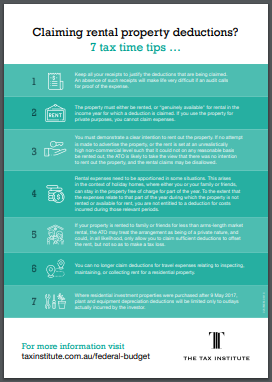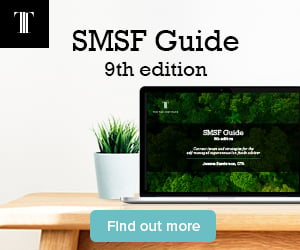.png?width=810&name=Copy%20of%200078LEARN_CTA3_Blog_images_refresh_Twitter-Blog-Header-1024x512%20(13).png)
This year, there have been a number of stimulus measures for tax practitioners to keep up with, as our regulators and Government respond to the COVID-19 pandemic. One of these was the cash flow boost.
We recently published an article in our Taxation in Australia journal, titled Tax effects of COVID-19 cash flow boosts, by Stephen Page, CTA. It’s a useful breakdown of how cash flow boosts should be treated for tax and accounting purposes, and whether they should be distributed, especially from trusts and companies.
“It is well known that cash flow boosts are tax-free to their original recipient. It is less well known that often they should be recorded in the capital section of the balance sheet, not as income,” Stephen writes.
“Also, it may not be immediately obvious when a distribution to a company shareholder from a cash flow boost may be or not be taxable. This article describes how all of this works.”
Written from a small and medium sized business perspective, our in-house tax experts flagged this journal article as essential reading for practitioners operating in the space.
“Trying to parse the tax impact of receiving the cash flow boost in relation to trusts, in particular, can be a challenge. Where a trust deed contains an income equalisation clause, the non-assessable non-exempt nature of the cash flow boost will mean it is excluded from trust income and will form part of trust capital. This has implications for the manner in which it is then distributed to beneficiaries. Stephen has done a wonderful job of breaking down this complex topic. An enjoyable, useful read,” said Robyn Jacobson, CTA, Senior Advocate at The Tax Institute.
The details
Title: Tax effects of COVID-19 cash flow boosts
Article author: Stephen Page, CTA, Partner, Stephen Page & Co
Published: 3 December 2020
Where to read it: members can access the full article in the December edition of the Taxation in Australia journal. Find the journal in your member portal.
Article snapshot:
The cash flow boosts should be brought to account as at the dates credited by the Australian Taxation Office. They are tax-free to their direct recipient, but taxable to shareholders when distributed by a company. However, the cash flow boosts are usually tax-free when distributed by a trust or partnership.
Although trusts and partnerships can usually distribute the cash flow boosts tax-free, they should be credited to a cash flow boost reserve and not distributed. This both suits the purposes for which they are paid by the government and, in a small way, helps the difficult task of capital formation in small-to-medium enterprises and especially trusts. Although the cash flow boosts are tax-free to their direct recipients, the costs that they fund remain tax deductible in the usual way, unless for capital works.Not a member of The Tax Institute yet? You can read this article – and plenty more – by signing up for a free 2 month trial membership. Trial membership gives you access to:
- 2 months free membership – worth over $115
- Professional development opportunities and up to 20 hours of complimentary CPD per annum – saving $1,600
- Monthly technical papers that cover recent tax developments, tax cases, new legislation and ATO rulings – saving $750
- Member only pricing to all the tax profession events, resources and videos you could possibly want











